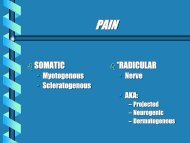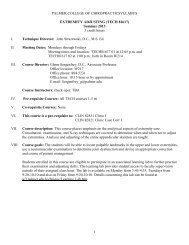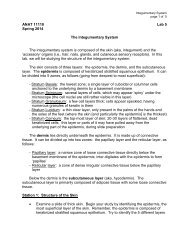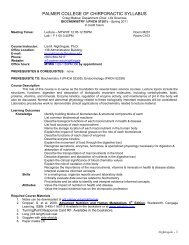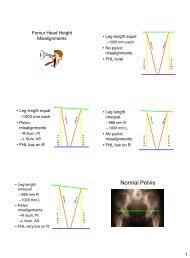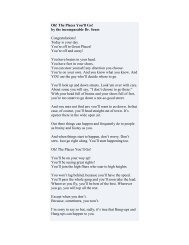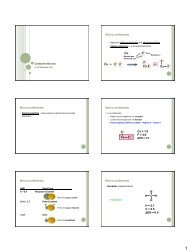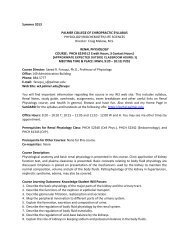You also want an ePaper? Increase the reach of your titles
YUMPU automatically turns print PDFs into web optimized ePapers that Google loves.
<strong>Thoracic</strong> <strong>Vertebrae</strong>page 2 <strong>of</strong> 6C. Intervertebral foramen1. Faces directly laterally, lying within a sagittal plane <strong>of</strong> <strong>the</strong> bodya. [Upside-down] pear shape in outline2. Specific spinal nerve exiting <strong>the</strong> intervertebral foramen is identifiedaccording to <strong>the</strong> vertebra making up <strong>the</strong> superior border <strong>of</strong> <strong>the</strong>intervertebral foramenD. Lamina1. Broad superior to inferior, plate-like2. Shingling: laminae <strong>of</strong> adjacent vertebrae overlap each o<strong>the</strong>r [like shingleson a ro<strong>of</strong>]E. Vertebral foramen1. Circular in shape2. Smaller than in <strong>the</strong> cervical or lumbar regionsF. Transverse process1. Large and club-shaped, becoming shorter from T1 to T122. Oriented obliquely posterio-laterally: T2-T4 more laterally oriented, whileT5-T8 more posteriorly oriented3. Transverse tubercle contains <strong>the</strong> transverse costal facet for articulationwith <strong>the</strong> articular facet <strong>of</strong> <strong>the</strong> tubercle <strong>of</strong> <strong>the</strong> same-numbered riba. Transverse costal facet oriented anteriorly and laterallyb. In T5-T8, <strong>the</strong> transverse costal facets also face slightly superiorly aswellG. Articular processes and facets1. Superior articular facet: oriented backward, upward, and lateral (BUL)



